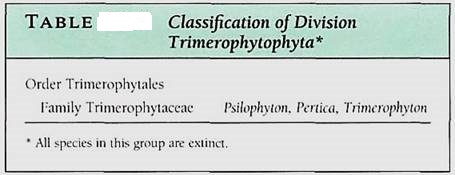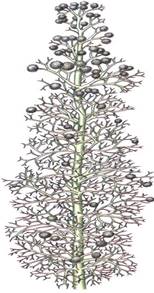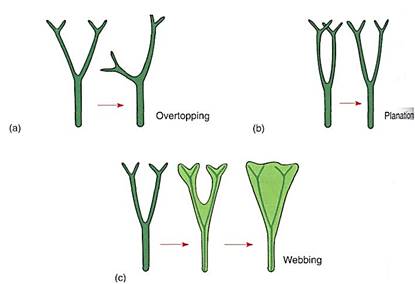

النبات

مواضيع عامة في علم النبات

الجذور - السيقان - الأوراق

النباتات الوعائية واللاوعائية

البذور (مغطاة البذور - عاريات البذور)

الطحالب

النباتات الطبية


الحيوان

مواضيع عامة في علم الحيوان

علم التشريح

التنوع الإحيائي

البايلوجيا الخلوية


الأحياء المجهرية

البكتيريا

الفطريات

الطفيليات

الفايروسات


علم الأمراض

الاورام

الامراض الوراثية

الامراض المناعية

الامراض المدارية

اضطرابات الدورة الدموية

مواضيع عامة في علم الامراض

الحشرات


التقانة الإحيائية

مواضيع عامة في التقانة الإحيائية


التقنية الحيوية المكروبية

التقنية الحيوية والميكروبات

الفعاليات الحيوية

وراثة الاحياء المجهرية

تصنيف الاحياء المجهرية

الاحياء المجهرية في الطبيعة

أيض الاجهاد

التقنية الحيوية والبيئة

التقنية الحيوية والطب

التقنية الحيوية والزراعة

التقنية الحيوية والصناعة

التقنية الحيوية والطاقة

البحار والطحالب الصغيرة

عزل البروتين

هندسة الجينات


التقنية الحياتية النانوية

مفاهيم التقنية الحيوية النانوية

التراكيب النانوية والمجاهر المستخدمة في رؤيتها

تصنيع وتخليق المواد النانوية

تطبيقات التقنية النانوية والحيوية النانوية

الرقائق والمتحسسات الحيوية

المصفوفات المجهرية وحاسوب الدنا

اللقاحات

البيئة والتلوث


علم الأجنة

اعضاء التكاثر وتشكل الاعراس

الاخصاب

التشطر

العصيبة وتشكل الجسيدات

تشكل اللواحق الجنينية

تكون المعيدة وظهور الطبقات الجنينية

مقدمة لعلم الاجنة


الأحياء الجزيئي

مواضيع عامة في الاحياء الجزيئي


علم وظائف الأعضاء


الغدد

مواضيع عامة في الغدد

الغدد الصم و هرموناتها

الجسم تحت السريري

الغدة النخامية

الغدة الكظرية

الغدة التناسلية

الغدة الدرقية والجار الدرقية

الغدة البنكرياسية

الغدة الصنوبرية

مواضيع عامة في علم وظائف الاعضاء

الخلية الحيوانية

الجهاز العصبي

أعضاء الحس

الجهاز العضلي

السوائل الجسمية

الجهاز الدوري والليمف

الجهاز التنفسي

الجهاز الهضمي

الجهاز البولي


المضادات الميكروبية

مواضيع عامة في المضادات الميكروبية

مضادات البكتيريا

مضادات الفطريات

مضادات الطفيليات

مضادات الفايروسات

علم الخلية

الوراثة

الأحياء العامة

المناعة

التحليلات المرضية

الكيمياء الحيوية

مواضيع متنوعة أخرى

الانزيمات
Division Trimerophytophyta
المؤلف:
AN INTRODUCTION TO PLANT BIOLOGY-1998
المصدر:
JAMES D. MAUSETH
الجزء والصفحة:
16-11-2016
4264
Division Trimerophytophyta
Division Trimerophytophyta was proposed in 1968 for three genera of extinct plants, Trimerophyton, Psilophyton, and Pertica (Table). The fossils strongly resemble those of rhyniophytes, having terminal sporangia that dehisced laterally, homospory, dichotomous branching, and an endarch vascular cylinder of tracheids. Trimerophytes, however, are considered a distinct advancement out of the rhyniophytes because of several special features. Most important is the trend of overtopping. Rather than stems of equal length as in true dichotomous branching, trimerophytes had an unequal branching in which one stem was more vigorous. In later species the inequality caused by overtop- ping was so pronounced that main stems and lateral stems can be identified easily. Finally, Pertica displays pseudomonopodial branching, that is, a single main trunk rather than a series of dichotomies (Fig. 1). The plants have small lateral branches, some fertile and bearing sporangia and others sterile and acting as leaves.


FIGURE 1:Pertica quadrifaria had one main trunk from which grew small branches; the smallest twigs still show dichotomous branching, but the larger stems branched pseudomonopodially. This branch pattern also evolved separately in the lycophytes, but here in the trimerophytes, it is the ancestor to the stem structure of seed plants. The globular structures are clusters of sporangia.
Simultaneously, the positioning of branches became more regular and controlled. In rhyniophytes, the points of dichotomy were irregular and unpredictable, but in some species of trimerophytes, lateral branches were arranged in a regular spiral phyllotaxy. Other types of phyllotaxy that occurred were alternate, decussate (opposite leaves arranged in four rows), distichous (leaves in two rows), tetrastichous (alternate leaves, in four rows), and even whorled. Correlated with the evolution of a pseudomonopodial growth habit and the presence of numerous photosynthetic lateral branches was an increase in the vigor and robustness of the plants. Individuals of Pertica quadrifaria had stems 1.5 cm wide and about 1 m tall, whereas those of P. dalhousii are estimated to have been as much as 3 m tall, about the height of tall shrubs today. Although a dense stand of P. dalhousiiwould not be called a forest, there would have been vertical stratification of light, air movement, and humidity within the canopy.
The trimerophytes became distinct from the rhyniophytes during the Lower Devonian and existed until the Upper Devonian Period, then came to an end by evolving into the ancestors of modern seed plants, ferns, and the arthrophytes.
ORIGIN OF MEGAPHYLLS
At least three distinct types of analogous structures called leaves occur in plants: (1) leaves on the gametophytes of nonvascular plants; (2) enations/microphylls of zosterophyllophytes and division Lycophyta; and (3) megaphylls, leaves that evolved from branch systems and are present in all seed plants, ferns, and arthrophytes (horsetails). Megaphyll evolution is summarized by the telome theory. Imagine a plant like Pertica consisting of a main stem and smooth, cylindrical, dichotomously branching lateral stems (Fig. 1). The ultimate twigs, those of the last dichotomy, are known as telomes. Now imagine that all subdivisions of a lateral branch become aligned in one plane (planation; Fig. 2) and that parenchyma develops between telomes and even lower branches (webbing). This is not a leaf, but it has suitable characteristics to be the ancestor to leaves . Also, the leaves we see on the trees and herbs of the flowering plants are the result of about 300 million years of evolutionary refinement. If the branch system involved in this evolution produced sporangia, the resulting structure would not be just a leaf, but rather a sporophyll, a sporangium-bearing leaf-like structure. For one reason or another, the plants with this organization outcompeted those with microphylls, the lycophytes. This is not to say that the megaphyll type of organization itself was the main reason for their success. But today, megaphyllous plants are by far the more common.

FIGURE 23.25:The leaves of ferns, Equisetum, and seed plants are megaphylls that arose by the evolutionary modification of stems. (a) The first step was the elimination of equal dichotomous branching; instead, one branch (the main axis) overtops the other, which remains smaller and lateral. (b) Next, lateral branch systems restricted their branching to just one plane (planation); fey 1 stopped producing three-dimensional branch systems. (c) Finally, the spaces between doge branches developed a thin sheet of chlorophyll-containing cells in a type of webbing.
 الاكثر قراءة في النباتات الوعائية واللاوعائية
الاكثر قراءة في النباتات الوعائية واللاوعائية
 اخر الاخبار
اخر الاخبار
اخبار العتبة العباسية المقدسة

الآخبار الصحية















 قسم الشؤون الفكرية يصدر كتاباً يوثق تاريخ السدانة في العتبة العباسية المقدسة
قسم الشؤون الفكرية يصدر كتاباً يوثق تاريخ السدانة في العتبة العباسية المقدسة "المهمة".. إصدار قصصي يوثّق القصص الفائزة في مسابقة فتوى الدفاع المقدسة للقصة القصيرة
"المهمة".. إصدار قصصي يوثّق القصص الفائزة في مسابقة فتوى الدفاع المقدسة للقصة القصيرة (نوافذ).. إصدار أدبي يوثق القصص الفائزة في مسابقة الإمام العسكري (عليه السلام)
(نوافذ).. إصدار أدبي يوثق القصص الفائزة في مسابقة الإمام العسكري (عليه السلام)


















